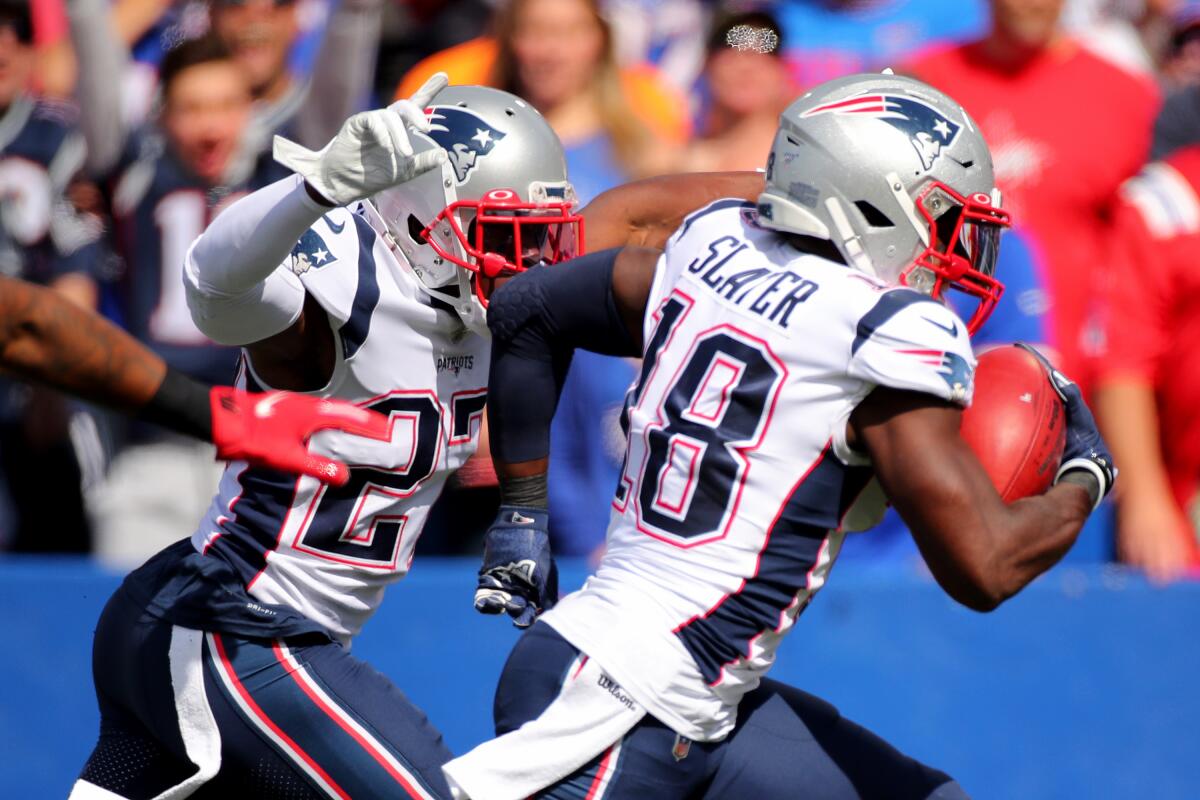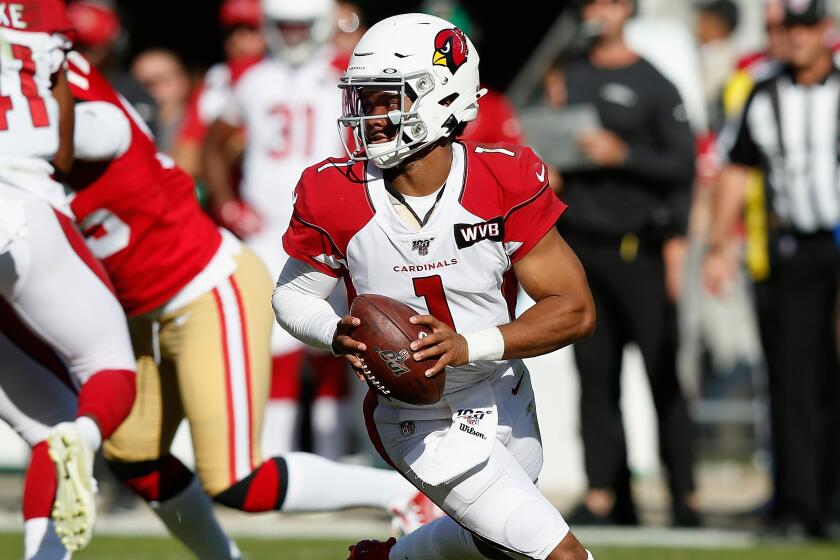Ask Sam Farmer: How unique is a career special teams star like Matthew Slater?

- Share via
Have a question about the NFL? Ask Times NFL writer Sam Farmer, and he will answer as many as he can online and in the Sunday editions of the newspaper throughout the season. Email questions to: sam.farmer@latimes.com
New England’s Matthew Slater, an All-Pro special teams captain, has changed several games with blocked kicks, open-field tackles and balls downed near the opponent’s goal line. We don’t often hear much about special teams. I was wondering, is a guy like Slater, a career special teams star, unique now or even in NFL history?
John Thompson, Downey
Farmer: No question, Matthew Slater is phenomenal, both as a player and an influence in the locker room. His dad, longtime Rams tackle Jackie Slater, is in the Hall of Fame, and Matthew is assembling a convincing case for Canton on his own. He’s a rare player, but not a unique one. Every relatively recent era seems to have a handful of special teams stars, beyond kickers and punters, who routinely affect games.
To get more insight on the topic, I reached out to Steve Tasker, a Hall of Fame semifinalist, to get his thoughts on what kind of players are built to succeed on special teams, on the fringes of the spotlight. Tasker, who spent most of his career with the Buffalo Bills, was a seven-time All-Pro selection — Slater is a four-time first-teamer — and made his biggest impact as a sure-tackling gunner on kick and punt teams.
“You get kids nowadays who will say when they’re in high school or college that they’ll do anything to play in the National Football League,” Tasker said. “But when they get to an NFL training camp, they decide that they won’t cover kicks to make an NFL team.
Eight teams stand a very good chance of making the NFL playoffs, but there are nine teams still in legitimate contention for postseason.
“They won’t try and block kicks, they won’t block for a kick returner, there’s a ton of things they won’t do to play in the NFL. That was always really puzzling to me because I did anything they would ask me to to play in the NFL.
“There’s a ton of guys out there who literally turned their backs on an NFL career because they didn’t want to cover kicks.”
Outstanding special teamers didn’t always have the status they do now. From 1964 to 1973, teams had a game-day roster limit of 40 players — six fewer than now — and special teams was more of an afterthought, often a way for second-stringers to get playing time. But when the rosters expanded, teams had the luxury of signing or developing some special-teams aces, and in a league so competitively balanced, strength in those areas often made the difference between winning and losing.
“Marv Levy used to tell us there was a difference of about 2% between the best and worst teams in the league,” Tasker said, referring to the Hall of Fame Bills coach.
“It’s not very much. They all draft their players from the same pool, sign their free agents from the same pool. It’s hard to get an edge. He made a point to us: ‘Listen, that 2% is 100% of the difference. So you’ve got to get it whenever you can.’
“And for us at the time, particularly when I got to Buffalo, special teams was the big difference maker.”
If booth reviews are decided in New York, why does the referee watch on a monitor?
Corey Ellyn, Long Beach
Farmer: If the on-field officials are out of the loop on a play that’s being challenged and/or reviewed, it might be faster to exclude them completely and let the officials on the fifth floor at the league’s Park Avenue headquarters quickly make their decision.
I asked league spokesman Michael Signora about that, and he said the referee watches the replay “for consultation purposes” while officials in New York make the call.
All games are monitored by league personnel in the Art McNally Gameday Central nerve center at NFL headquarters.
When a coach throws a red challenge flag, Al Riveron, the league’s head of officiating, is patched through to that game’s referee. Riveron has a wall of touch-screen monitors and looks for the best angle to judge the play.
Those video feeds are limited to what the networks provide, so Riveron does not have access to any coaches tape or in-house cameras.
Riveron is looking for “clear and obvious visual evidence” that would warrant changing a call. Absent that, the league won’t change it. And while he will listen to the opinion of the on-field official, who is also looking at the video, Riveron has the final say.
The Rams have struggled against dual-threat quarterbacks, and Arizona Cardinals rookie Kyler Murray presents another challenge in a virtual must-win game.
More to Read
Go beyond the scoreboard
Get the latest on L.A.'s teams in the daily Sports Report newsletter.
You may occasionally receive promotional content from the Los Angeles Times.













